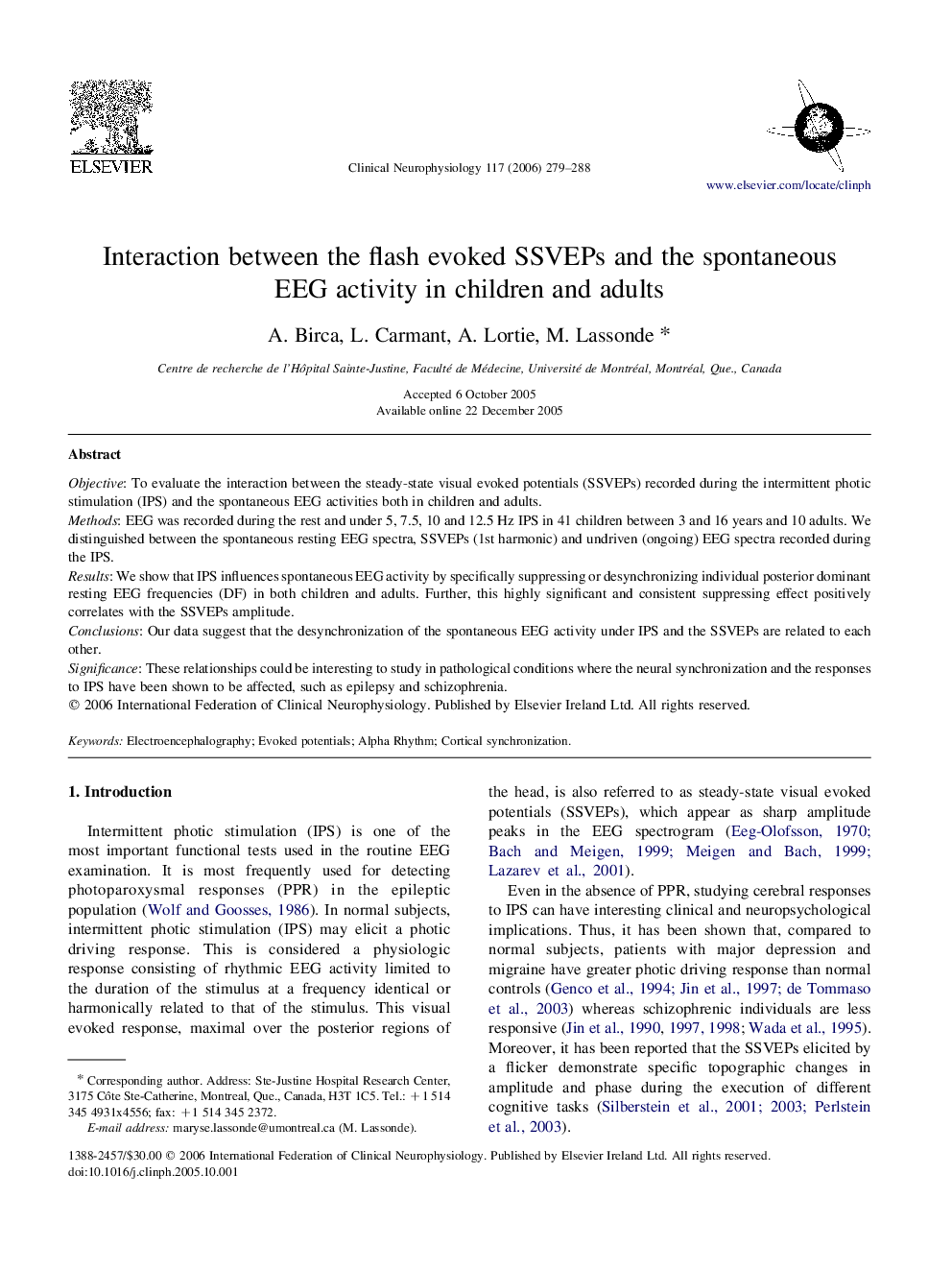| Article ID | Journal | Published Year | Pages | File Type |
|---|---|---|---|---|
| 3048133 | Clinical Neurophysiology | 2006 | 10 Pages |
ObjectiveTo evaluate the interaction between the steady-state visual evoked potentials (SSVEPs) recorded during the intermittent photic stimulation (IPS) and the spontaneous EEG activities both in children and adults.MethodsEEG was recorded during the rest and under 5, 7.5, 10 and 12.5 Hz IPS in 41 children between 3 and 16 years and 10 adults. We distinguished between the spontaneous resting EEG spectra, SSVEPs (1st harmonic) and undriven (ongoing) EEG spectra recorded during the IPS.ResultsWe show that IPS influences spontaneous EEG activity by specifically suppressing or desynchronizing individual posterior dominant resting EEG frequencies (DF) in both children and adults. Further, this highly significant and consistent suppressing effect positively correlates with the SSVEPs amplitude.ConclusionsOur data suggest that the desynchronization of the spontaneous EEG activity under IPS and the SSVEPs are related to each other.SignificanceThese relationships could be interesting to study in pathological conditions where the neural synchronization and the responses to IPS have been shown to be affected, such as epilepsy and schizophrenia.
